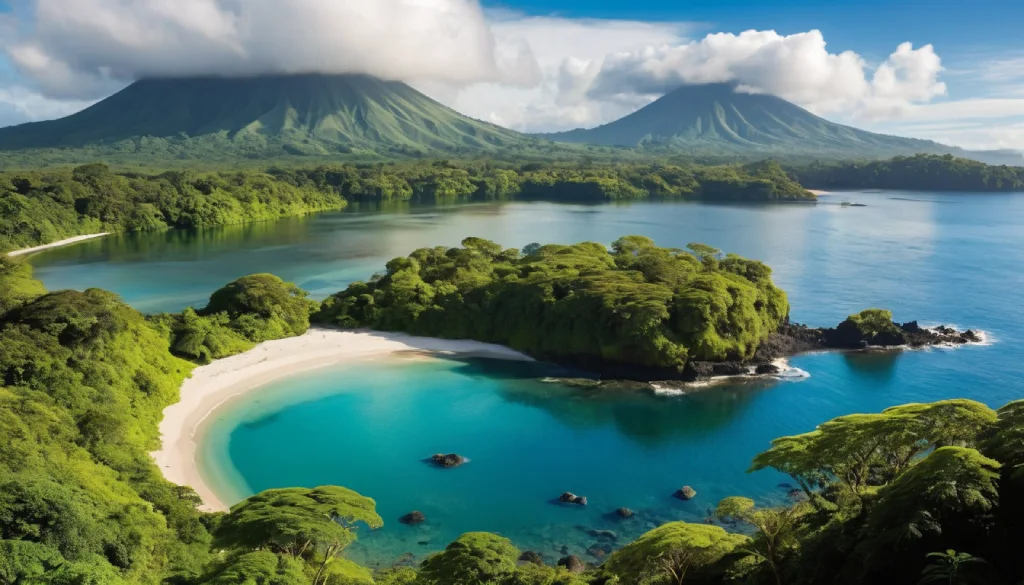Introduction to eco-friendly travel
Travel is evolving, and so are we. As the world becomes more aware of its environmental challenges, conscious travelers are seeking destinations that align with their values. Eco-friendly travel isn’t just a trend; it’s a movement toward sustainability and responsible exploration.
In 2025, the landscape of travel promises an exciting array of options for those who prioritize nature and community in their adventures. From lush rainforests to majestic mountains, there are remarkable places waiting to be discovered by eco-conscious wanderers.
This guide will take you through ten incredible eco-friendly travel destinations that not only provide breathtaking experiences but also promote sustainable practices. Get ready to embark on a journey where your travels leave a positive mark on both the planet and local communities!
The importance of conscious travel
Conscious travel is about more than just visiting new places. It’s an awakening to the impact we have on the environment and local communities. When travelers choose sustainable options, they foster a deeper connection with nature and culture.
This type of travel encourages respect for ecosystems and biodiversity. By prioritizing eco-friendly choices, tourists play a role in preserving these precious resources for future generations.
Moreover, conscious travel supports local economies. Engaging with community-owned businesses helps ensure that tourism benefits those who call the destination home.
Awareness around ethical practices has never been more crucial. As our planet faces unprecedented challenges, each mindful journey contributes to global efforts in conservation and sustainability.
Traveling consciously empowers individuals to make informed choices. This not only enhances personal experiences but inspires others to follow suit, creating a ripple effect throughout the industry.
Top 10 eco-friendly travel destinations for 2025
Traveling sustainably is more than a trend; it’s a necessity. Eco-friendly travel destinations are on the rise, allowing conscious travelers to explore while protecting our planet.
Costa Rica stands out as a pioneer in sustainable tourism. Its lush landscapes and vibrant biodiversity make it an irresistible choice for nature lovers.
Iceland offers breathtaking scenery powered by renewable energy. Explore geothermal wonders and stunning waterfalls while minimizing your carbon footprint.
New Zealand takes pride in its conservation efforts. With pristine environments and rich Maori culture, every visit supports responsible tourism initiatives.
Meanwhile, Bhutan’s commitment to remaining carbon-negative makes it unique among tourist destinations. Visitors experience tranquility amid majestic mountains without leaving an ecological scar.
Kenya presents wildlife experiences intertwined with community development programs, ensuring that both animals and local people benefit from eco-tourism.
Norway showcases breathtaking fjords alongside innovative eco-lodges designed to harmonize with nature’s beauty.
Costa Rica – the leader in sustainable tourism
Costa Rica stands out as a beacon of sustainable tourism. This Central American gem is renowned for its commitment to preserving nature while welcoming tourists.
With over 25% of its land designated as protected areas, Costa Rica boasts lush rainforests and abundant wildlife. Travelers can explore diverse ecosystems through eco-lodges that promote conservation efforts.
The country prioritizes renewable energy, generating more than 99% from sustainable sources. Tourists often engage in activities like zip-lining through canopies or hiking up volcanoes, all designed with minimal environmental impact.
Local communities benefit directly from eco-tourism too. Visitors support small businesses by staying in locally owned accommodations and participating in cultural tours.
Costa Rica’s dedication to sustainability makes it an ideal destination for conscious travelers seeking unforgettable experiences without harming the planet.
Iceland – a haven for green energy and natural beauty
Iceland stands out as a pristine gem for eco-conscious travelers. This island nation harnesses the power of geothermal energy, which fuels homes and businesses while minimizing carbon footprints.
Visitors can experience this clean energy firsthand at places like the Blue Lagoon, where naturally heated waters offer relaxation amid stunning landscapes. The contrast of lush greenery against stark volcanic rock is breathtaking.
Nature lovers will revel in Iceland’s diverse ecosystems. From majestic waterfalls to expansive lava fields, every turn reveals awe-inspiring sights. Wildlife enthusiasts may spot puffins nesting along cliffs or whales breaching off coastal shores.
The commitment to sustainability extends beyond energy use; local cuisine emphasizes fresh, seasonal ingredients sourced from sustainable practices. Dine on dishes that reflect the land’s rich offerings while supporting local farmers and fishermen.
Travelers seeking adventure can also embrace eco-friendly activities like hiking or exploring national parks, ensuring their visit leaves no trace behind.
New Zealand – promoting conservation and responsible tourism
New Zealand stands out as a beacon for eco-conscious travelers. Its breathtaking landscapes are matched only by its commitment to conservation.
The country has implemented strict regulations to protect its unique biodiversity. Many tourist destinations focus on preserving natural habitats while providing authentic experiences.
Visitors can explore the stunning fjords of Milford Sound or hike through the pristine trails of Abel Tasman National Park, all with minimal environmental impact. Eco-lodges and sustainable tours offer incredible insights into local ecosystems without compromising their integrity.
Moreover, New Zealand’s Māori culture emphasizes the connection between people and nature. This philosophy is evident in various tourism initiatives that highlight responsible travel practices.
With every step taken on this diverse land, travelers engage in a deeper understanding of sustainability and ecological balance. It’s not just about enjoying the views; it’s about leaving them untouched for future generations to cherish.
Bhutan – the world’s first carbon-negative country
Bhutan stands out as a remarkable example of sustainability. Nestled in the Eastern Himalayas, it is renowned for prioritizing environmental well-being over economic gain.
This unique country has made strides to maintain its carbon-negative status. With a commitment to preserving forests and promoting renewable energy, Bhutan produces more clean energy than it consumes.
Visitors can explore breathtaking landscapes while witnessing conservation efforts firsthand. The government actively encourages eco-friendly practices among locals and tourists alike.
Cultural immersion offers an authentic experience. Tourists engage with communities that value harmony between nature and tradition. Monasteries perched on cliffs showcase stunning views alongside initiatives aimed at ecological preservation.
Travelers will leave with not just memories but also an appreciation for sustainable living in action. Bhutan’s approach creates a model for other tourist destinations striving for a greener future, where nature thrives amidst cultural richness.
Kenya – combining wildlife conservation with community development
Kenya stands out as a model for blending wildlife conservation with community development. Its rich biodiversity attracts travelers eager to experience the thrill of safaris while supporting local initiatives.
Many national parks and reserves, like Maasai Mara and Amboseli, offer eco-friendly lodges that directly benefit surrounding communities. Tourists contribute to both environmental protection and local economies by choosing these accommodations.
Community-based tourism enables visitors to engage with indigenous cultures. This fosters an understanding of traditional practices that prioritize sustainable living alongside habitat preservation.
Moreover, collaborative projects ensure that locals are invested in protecting their natural heritage. By involving residents in conservation efforts, Kenya creates a harmonious balance between nature and human activity.
Those seeking authentic experiences will find unique opportunities here—where every visit leaves a positive footprint on both people and planet.
Norway – leading the way in eco-tourism and
Norway stands out as a beacon of sustainability and innovation in eco-tourism. This stunning Scandinavian country is renowned for its breathtaking fjords, majestic mountains, and vibrant cities that harmoniously blend with nature. Norway’s commitment to preserving the environment is evident in its extensive use of renewable energy sources, primarily hydropower.
Urban travel enthusiasts will find Oslo particularly appealing. The capital has made significant strides in reducing carbon emissions by promoting electric transportation options and implementing green urban planning initiatives. Biking through the city or enjoying public transport are not only eco-friendly choices but also allow travelers to soak up the local culture.
The natural landscapes offer countless opportunities for adventure while ensuring minimal impact on ecosystems. From hiking in Jotunheimen National Park to exploring the northern lights in Tromsø, each experience highlights Norway’s dedication to conservation.
Moreover, many accommodations prioritize sustainability practices by using locally sourced materials and supporting community initiatives. Travelers can indulge guilt-free knowing their stay contributes positively to both local economies and environmental preservation.
As we look towards 2025, Norway remains a top contender among tourist destinations committed to responsible travel—making it an essential stop for conscious explorers seeking unforgettable experiences without compromising the planet’s health.




